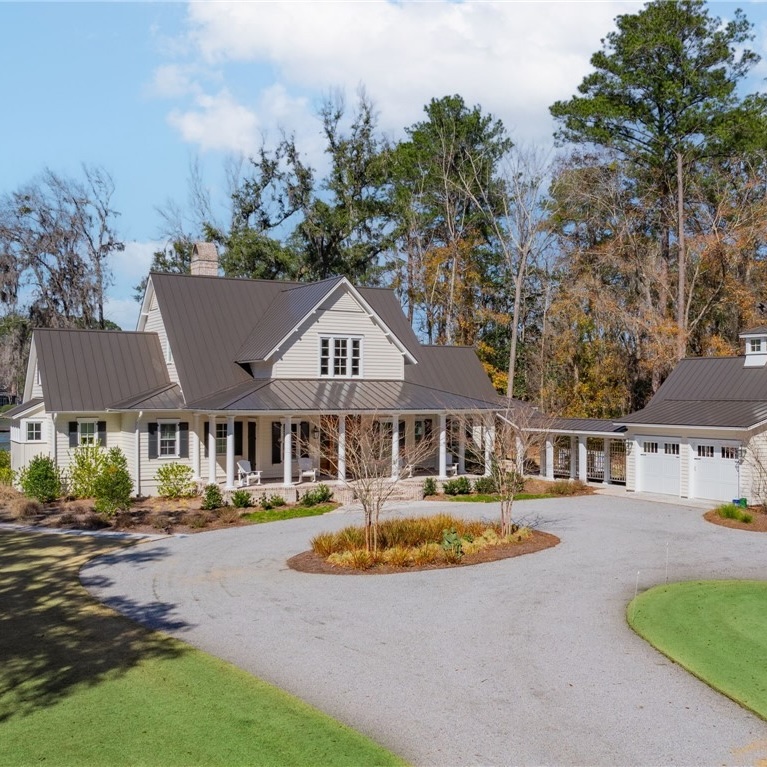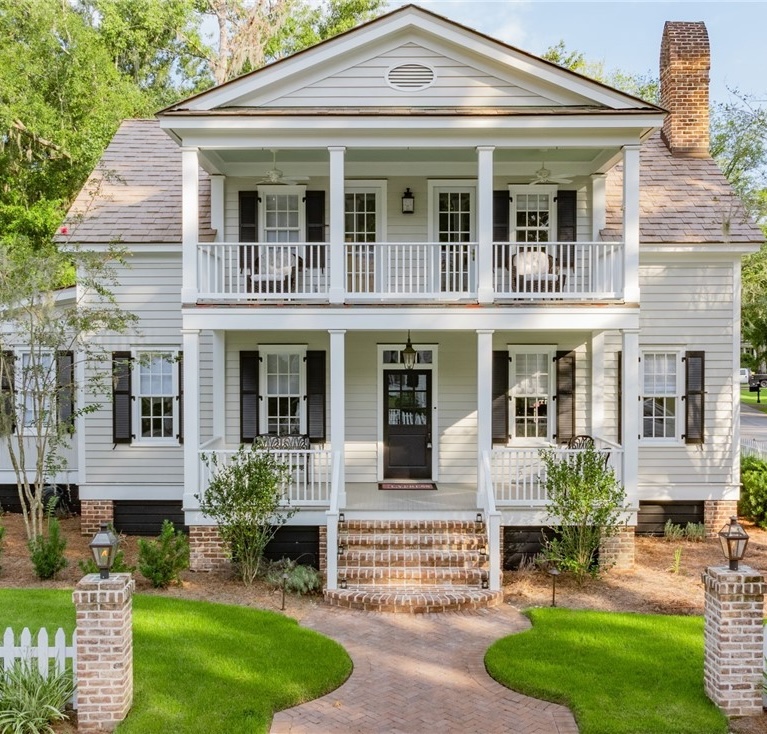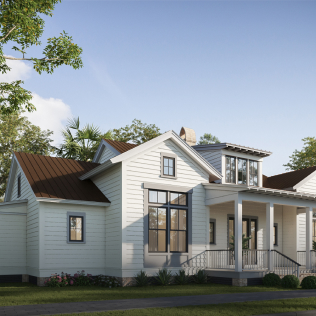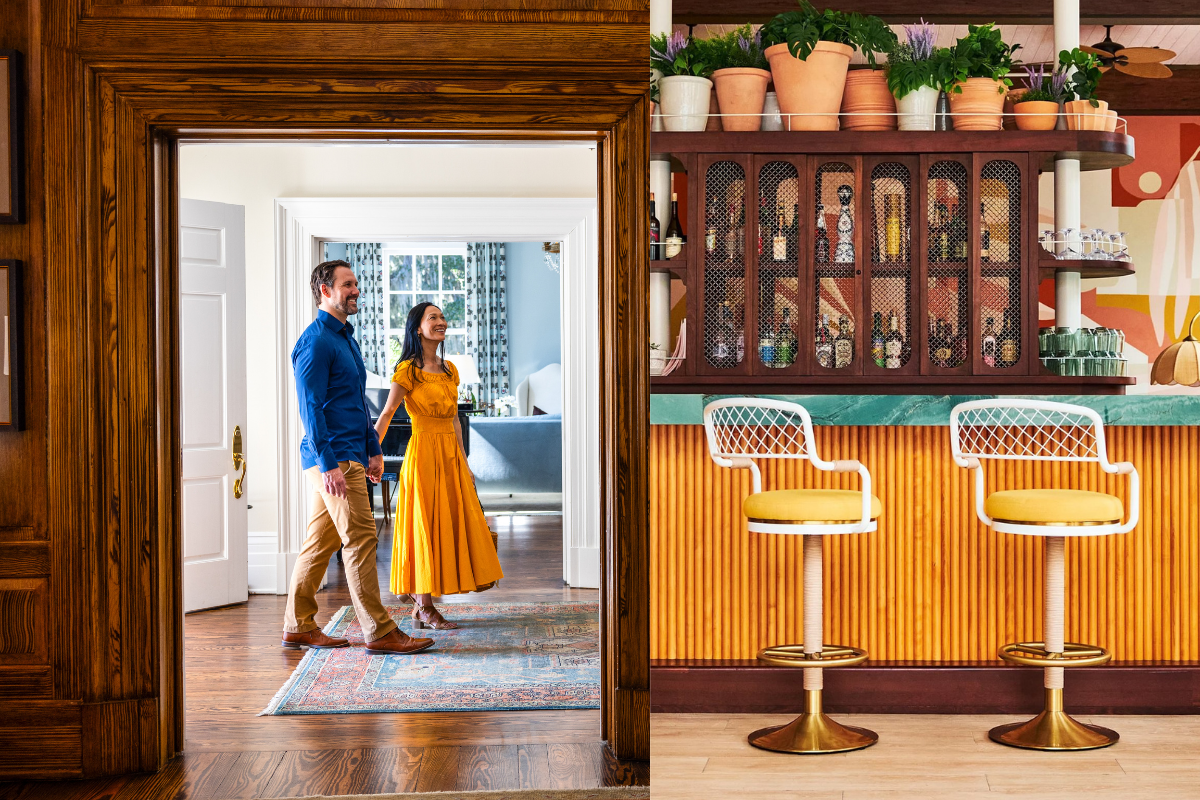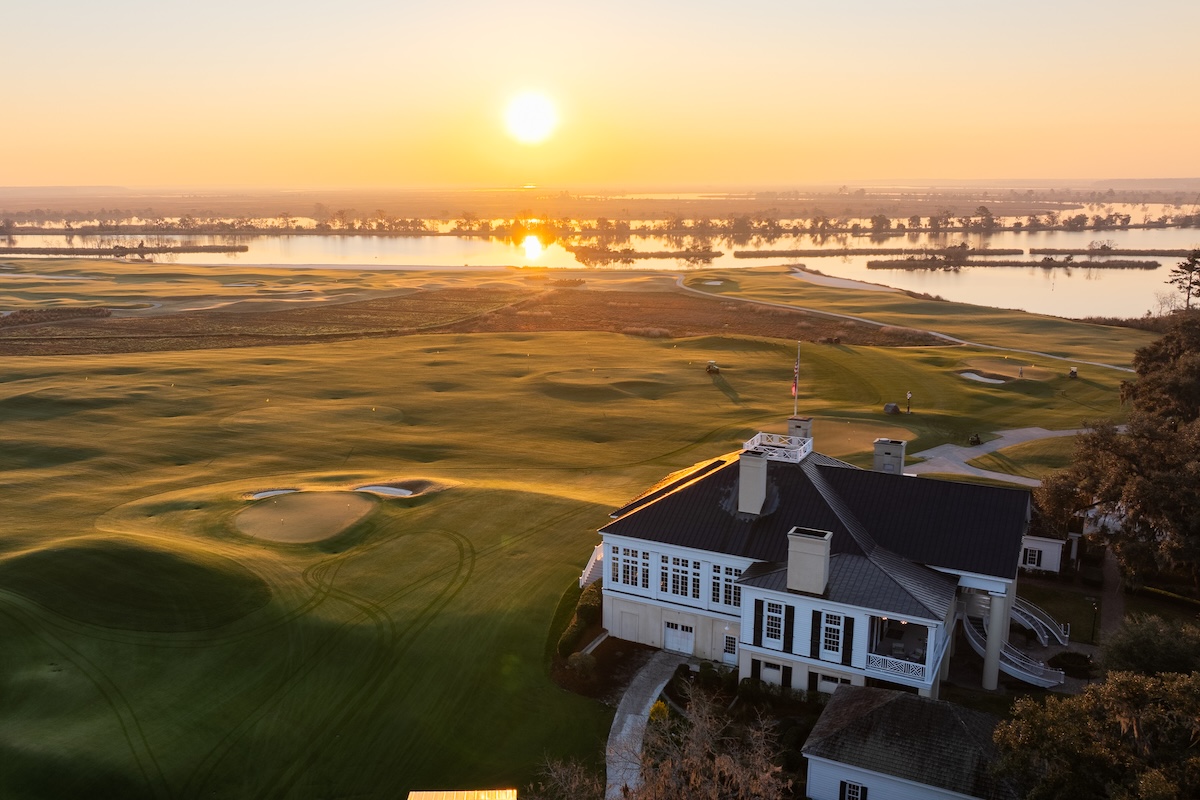Nestled on the waterfront of Savannah’s historic River Street, Plant Riverside District is a sprawling fusion of luxury and lights. From walls composed of sparkling geodes to hotel rooms laced in European elegance, it is safe to say there is something for everyone here—almost too much for a single day trip.
The music strumming from bars, the slew of visitors, the glass storefronts that look like terrariums filled with delightful wares—it’s overwhelming at first, especially if you had grown accustomed to what was once the sleepier end of River Street.
“What is this place?” a man asks in wonder as he stands beneath the colossal, 137-foot, chrome-dipped dinosaur skeleton that hangs from the ceiling of the JW Marriott lobby.
Plant Riverside is many things, but conventional is not one of them. It houses a collection of shops and galleries, an intimate outdoor performance venue, and more than a dozen restaurants, including three rooftop bars with stunning views of Savannah and South Carolina. Then there’s the hotel itself, so imperceptibly woven into the fabric of the district’s sights, that it takes you by surprise when you suddenly discover you’re standing in the lobby.
Like the hotel lobby, it feels as if the district’s many amenities are without borders—you find yourself entering, exploring and exiting spaces without even realizing it. Around each turn are visual delights like suspended models of an ancient species of bird with expansive wings and the entryway to the base of one of two iconic smokestacks around which Plant Riverside District was built, revealing the sky hundreds of feet above.
The overall design is a study in opposites—where high-tech and old-world, sleek and textured, old and new seamlessly blend together. In this way, Plant Riverside is a successful renovation, bringing modern experiences to the Hostess City while remaining respectful of its rich history.
The history of Plant Riverside really begins with the two towering smokestacks that crown the former power plant, climbing high into the firmament. At the turn of the century, the site housed the Savannah Power Company Riverside Station, which helped to power the city’s infrastructure during the transition from gas to electric. With WWII raging in Europe, the Port of Savannah was converted into a predominantly military cargo port. When the war ended, the riverfront became dilapidated and undesirable and fell into decay for the next several decades.
The power plant, however, endured. Smoke poured heartily from the stacks until the plant closed in the late ’80s. It remained vacant for decades in spite of the fact that tourism along the opposite end of River Street had been flowing steadily for almost 50 years.
“The Savannah Power Company Riverside Station was the largest and most prominent industrial building near downtown, making it a desirable adaptive reuse project,” says Robin Williams, chair of architectural history at Savannah College of Art and Design. He explains that due to its location at the west end of the waterfront, it made perfect sense to place a hotel where the vast majority of visitors would come to explore Savannah’s distant past.
Richard Kessler, a Savannah native and renowned hotel developer, happened to be the man with the ingenuity and the means of acquiring such a rare piece of real estate. Hidden away within the rusty rafters of the high-vaulted skylights and the charmingly crooked alleyway underpasses, Kessler saw the glint of a gold mine. He and his team of designers, including architect Christian Sottile, an international, award-winning urban designer and dean of SCAD School of Building Arts, set out to imbue every brick with energy.
Each moment spent roaming among the boutiques and exotic restaurants brings a range of fresh, exciting and dazzling sensations back to River Street. This experience is only enhanced when you notice it’s framed by a building that has watched Savannah grow for more than a century.
“The goal of preservation is to preserve historic architectural fabric,” Williams explains. “Unlike other forms of cultural expression, architecture must answer to practical realities of being useful.” With renewed purpose—to attract tourists and locals alike with enchanting one-of-a-kind experiences—the once-forgotten Power Plant has remained true to its roots by bringing new energy to Savannah’s waterfront.
PlantRiverside.com

